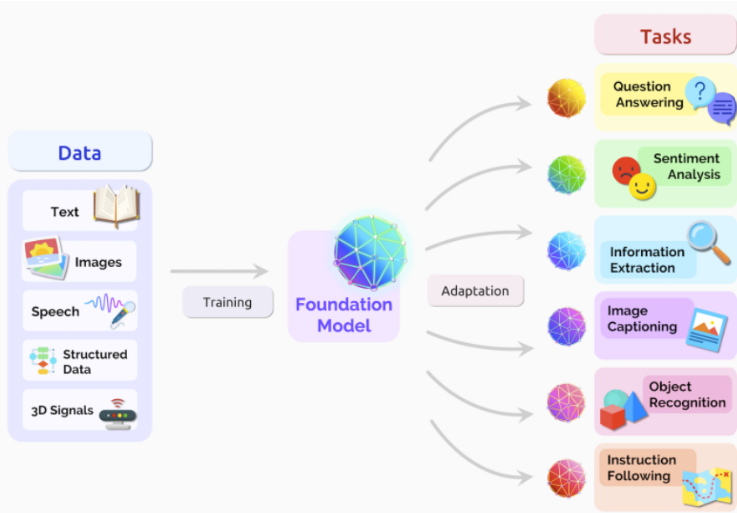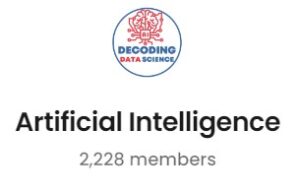Large Language Models for Beginners
Table of Contents
Introduction
1.1. Why Talk About Large Language Models?
Large language models have become a focal point in the tech world, and in this article, we explore why they are worth discussing. These models are not just a passing trend; they represent a significant advancement in the field of AI and data science.
1.2. Who Can Benefit from this Information?
Whether you are a novice in the tech industry, a passionate data science enthusiast, or someone operating an AI academy, understanding large language models can offer substantial advantages.

What is a Large Language Model?
2.1. Basic Definition
A large language model is a machine learning model that has been trained on a massive dataset to perform tasks related to natural language understanding and generation. These models can comprehend and generate human-like text, making them incredibly versatile.
2.2. Historical Background
The concept of language models isn’t new, but the scale at which these models operate today is unprecedented. This growth is attributed to advances in computational power and the availability of vast amounts of data, enabling these models to reach new heights in performance.
Key Components of Large Language Models
3.1. Architecture
Large language models rely on intricate architectures, such as the Transformer or LSTM. These architectures consist of millions, or even billions, of parameters that enable them to capture complex language patterns and relationships.
3.2. Training Data
The quality and quantity of training data are pivotal to the performance of large language models. Access to vast and diverse datasets allows these models to learn from a wide range of sources, enhancing their ability to understand and generate text.
3.3. Algorithms
Advanced machine learning algorithms, including backpropagation and gradient descent, play a crucial role in training large language models. These algorithms help fine-tune the model’s parameters to optimize its performance on specific tasks.
Why Are They Popular?
4.1. Use Cases
Large language models have a multitude of practical applications. They can power chatbots, generate content, assist in code writing, and even improve search engines. Their versatility makes them indispensable in various domains.
4.2. Advantages Over Smaller Models
What sets large language models apart from their smaller counterparts is their ability to provide more accurate and contextually relevant results. Their sheer scale and complexity enable them to understand and generate text that closely mimics human language.

How Do They Work?
5.1. Neural Networks
At the heart of large language models are neural networks. These complex networks are designed to mimic the human brain’s ability to process information. They play a fundamental role in understanding and generating text by learning intricate patterns and relationships within language.
5.2. Tokenization
Text is broken down into smaller units called tokens. Tokenization allows the model to analyze and process text in a structured manner. By examining these tokens, large language models gain insights into the underlying patterns and semantics of language.
5.3. Training and Fine-tuning
Training large language models is a resource-intensive process. They are trained on massive datasets, and fine-tuning is often necessary to adapt them to specific tasks. During training, the models learn to generate text that aligns with the desired outcomes.
Common Platforms for Large Language Models
6.1. OpenAI’s GPT Series
OpenAI’s GPT series, ranging from GPT-2 to GPT-4, has been at the forefront of large language models. These models have been influential in various applications, including natural language understanding, content generation, and more.
6.2. Google’s BERT
Google’s BERT (Bidirectional Encoder Representations from Transformers) is another powerhouse in the field of large language models. It has found significant utility in improving search engine optimization (SEO) by enhancing the understanding of search queries.
Implications for Data Science and AI
7.1. Data Analytics
Large language models have revolutionized data analytics. Their ability to process vast amounts of textual data and extract valuable insights makes them indispensable tools for data scientists and analysts.
7.2. Natural Language Processing
When it comes to natural language processing (NLP) tasks, large language models excel. They can perform sentiment analysis, language translation, and text summarization, opening up a world of possibilities for AI-driven applications.
Challenges and Limitations
8.1. Ethical Considerations
Large language models raise ethical considerations. They can inadvertently perpetuate bias present in their training data. Ensuring fairness and addressing bias is an ongoing challenge in the field.
8.2. Computational Costs
The computational resources required to train and run large language models are substantial. This can be a limiting factor for many organizations due to the associated high costs.
Getting Started: A Guide for Beginners
9.1. Tools and Resources
For beginners, there are tools and resources available to explore large language models. Platforms like Hugging Face offer user-friendly interfaces and pre-trained models, making it easier to get started.
9.2. Best Practices
Starting with smaller models and gradually scaling up is a recommended best practice. Understanding the limitations and potential ethical concerns is essential when working with large language models.
Future Prospects
10.1. Research and Development
The future of large language models lies in ongoing research and development efforts. Researchers are actively working to make these models more efficient, ethical, and accessible.
10.2. Scalability and Efficiency
As technology advances, we can expect large language models to become more scalable and efficient. This will open up new possibilities for their use in various industries.
Conclusion
Large language models are here to stay and are not merely a passing trend. Understanding their inner workings and implications is essential for anyone interested in AI and data science. As a beginner, this knowledge can provide a competitive edge in the rapidly evolving tech landscape.
FAQs
Here are some frequently asked questions about large language models:
Q: What are the prerequisites for working with large language models?
A: A basic understanding of machine learning and programming languages like Python is recommended.
Q: Are these models restricted to English?
A: No, many models are multilingual and can work with multiple languages.
Q: How much does it cost to use these models?
A: Costs can vary. Some platforms offer free tiers, while others may charge based on usage.
Q: Are they reliable for critical applications?
A: While they are robust, it’s essential to consider their limitations and ethical implications for critical applications.
Q: Can large language models replace human intelligence?
A: No, they are tools that augment human capabilities but cannot replace human judgment.
If you want to learn more about statistical analysis, including central tendency measures, check out our comprehensive statistical course. Our course provides a hands-on learning experience that covers all the essential statistical concepts and tools, empowering you to analyze complex data with confidence. With practical examples and interactive exercises, you’ll gain the skills you need to succeed in your statistical analysis endeavors. Enroll now and take your statistical knowledge to the next level!
If you’re looking to jumpstart your career as a data analyst, consider enrolling in our comprehensive Data Analyst Bootcamp with Internship program. Our program provides you with the skills and experience necessary to succeed in today’s data-driven world. You’ll learn the fundamentals of statistical analysis, as well as how to use tools such as SQL, Python, Excel, and PowerBI to analyze and visualize data designed by Mohammad Arshad, 18 years of Data Science & AI Experience. But that’s not all – our program also includes a 3-month internship with us where you can showcase your Capstone Project.
Are you passionate about AI and Data Science? Looking to connect with like-minded individuals, learn new concepts, and apply them in real-world situations? Join our growing AI community today! We provide a platform where you can engage in insightful discussions, share resources, collaborate on projects, and learn from experts in the field.
Don’t miss out on this opportunity to broaden your horizons and sharpen your skills. Visit https://nas.io/artificialintelligence and be part of our AI community. We can’t wait to see what you’ll bring to the table. Let’s shape the future of AI together!

